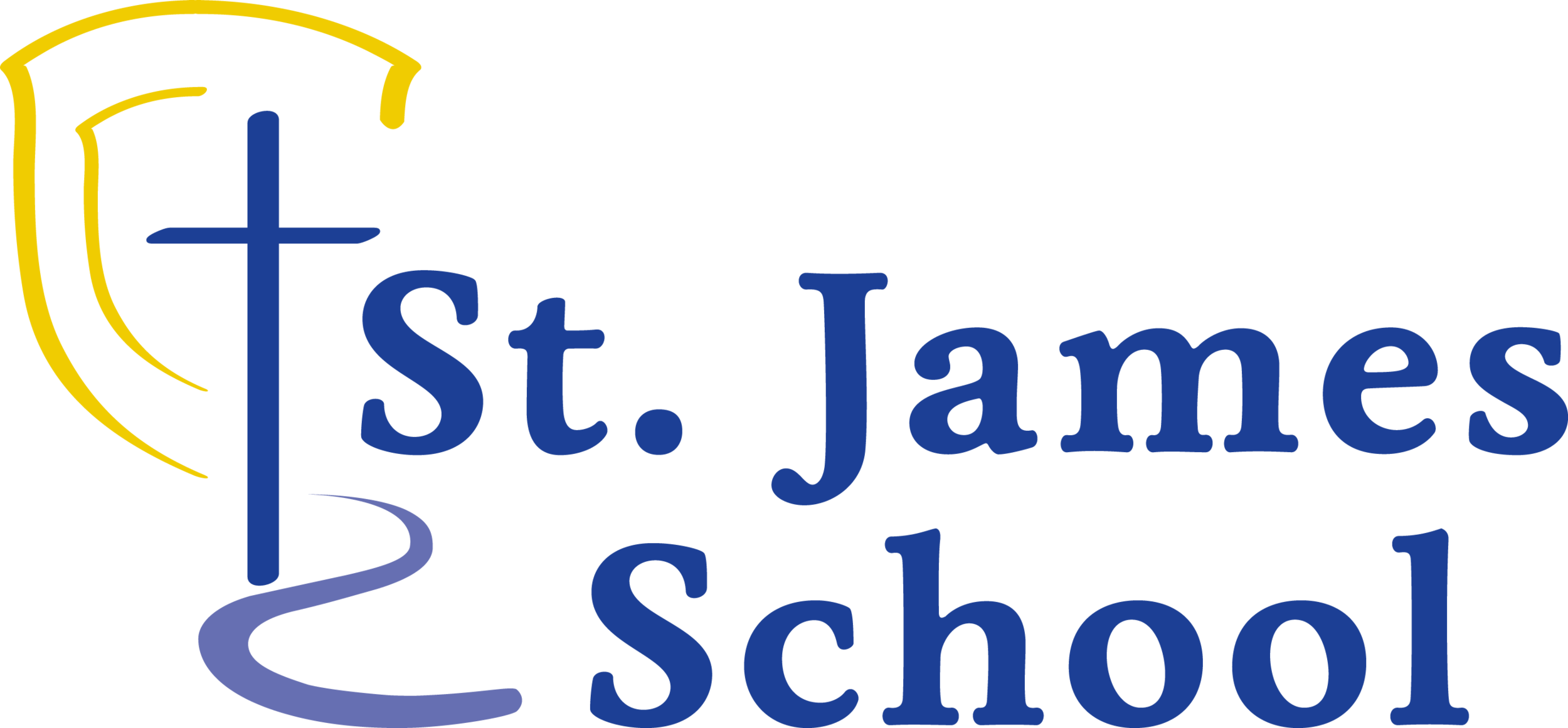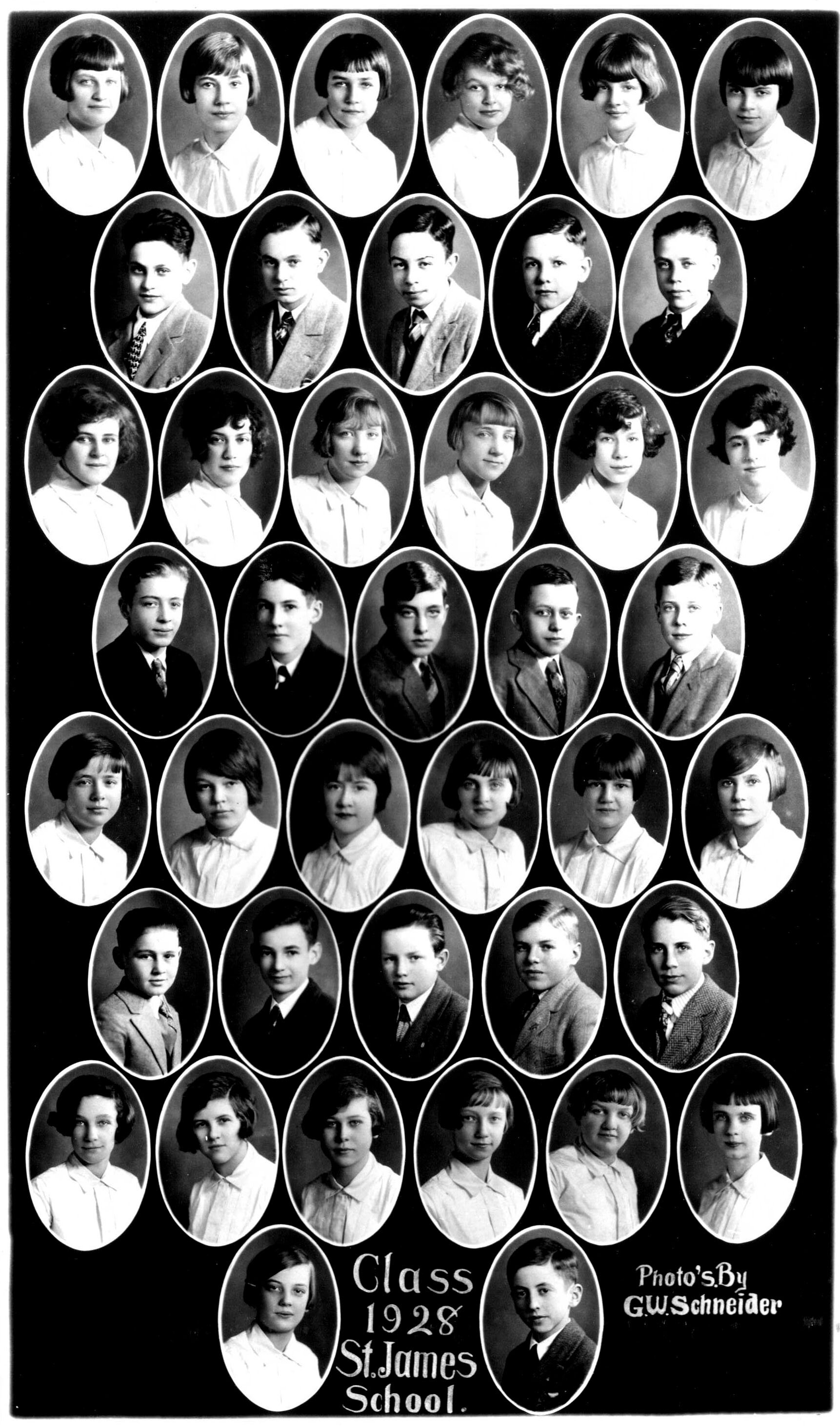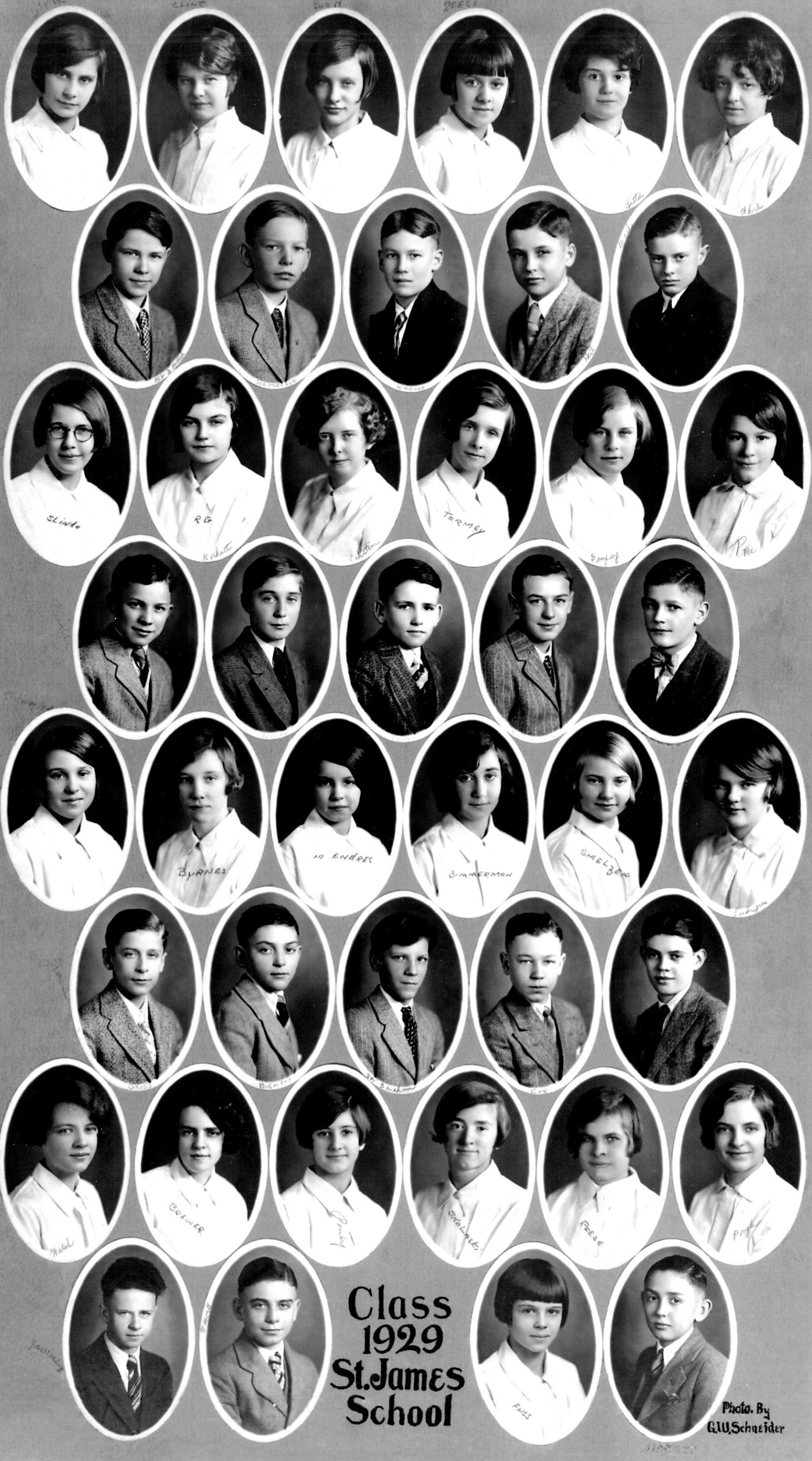St. James School in the 1920s and 1930s
“Faithful and ever loyal let us cheer for dear St. James.
Let every heart sing let every voice ring
There’s no time to grieve or sigh
It’s ever onward our course pursuing,
May defeat ne’er our ardor cool.
But united we will fight for our dear old school.”
With the start of the 1920s, the parish was considered “one of the finest of Madison’s Catholic communities.” (Silver Jubilee, 1905-1930, booklet). In just 25 years, the parish grew from 85 to 400 families.
The new church, Romanesque in architecture, was completed in 1924 and described as one of the finest not only in Madison but in Southern Wisconsin.
Contributing to the success and vitality of the parish, the school brought in families who sought to fill their social and spiritual needs. The number of young men and women entering the religious life is one measure of spiritual success of a parish school so, too, is the number of events and groups organized within the parish.
While several parish sons were ordained to the priesthood prior to 1920s, James Rocca was the first graduate to be ordained. Fr. James Rocca offered his first Mass on June 15, 1924, in the new church. Four years later, the Rev. Paul Grosse, another school graduate, celebrated his first Mass in the church.(See the February anniversary posting for more on those who entered the religious life.) Several young women who entered the Sisters of Notre Dame returned as teachers in the school.
Interior of the New Church 1924
Fr. James Rocca
Fr. Robert Enders
Fr. Frederick Arnold
Father Robert Enders*, the great uncle of current school principal Randy Enders, was ordained in June of 1939 with Fr. Fredrick Arnold giving the sermon. A popular assistant, Fr. Arnold served St. James from 1928 to 1938, serving as acting administrator before being transferred to parishes in the Milwaukee area. He is credited with fostering vocations and giving life to the Catholic Youth Organization (CYO).
Societies contribute to parish
By 1930, 10 societies were active and contributing to the social life of the parish. “Without societies there would be no organized parish activities, and an inactive parish must ultimately fail. The splendid bond of union and spirit from the beginning has achieved success.” Silver Jubilee booklet (1905-1930)
Among the societies listed was the Parent Teacher Association, started in 1919. While the pastor was initially not enthusiastic about a PTA at the school because he “became fearful that its activities might reach the extent of dictating to the Sisters or even meddling with the teaching system.”
PTA Supports School
Miss Martha Reilly, truant officer in the Madison schools and an ardent PTA advocate, lent her support and finally convinced him that the sole purpose was to give help that much good would come of it. In 1919, St. James became a member of the national Congress of Parents and Teachers.
With no budget, the PTA appealed to the Christian Mothers Society. With most of its members having children in school, the society presented a gift of $50 to the PTA to start its treasury. Records also show gifts from Knights of Columbus, Foresters and Dr. and Mrs. William Ganser.
While raising funds, the PTA also brought the parents together for card parties and mixers. Special projects included milk furnished to the children, Christmas party for the school, Christmas shower of canned goods for the sisters, and an outing to the Link cottage across one of the lakes during the summer for the sisters, according to the history written by Mrs. Roman Vetter in 1944. Today, St. James School parents and guardians belong to its own Home and School Association which provides support and funding to the school.
St. James Wins Boxing Championships
During this time, boxing became popular. According to several accounts, St. James became known for its championships: a proud boxing history. Parishioner Marge Stoneman remembers the boxing ring in the school basement. A newspaper article from 1938 reported that 9-year-old Rollie Grosse was awarded the Catholic Youth Organization (CYO) outstanding contender in the Dane County grade school league. St. James hosted the tournament which brought in over 400 spectators.
Marge Stoneman, school alum and long-time parishioner, also remembers the back playground being flooded during the winter for an ice-skating rink. She didn’t realize it was a city park until later. The park has been updated and is well used by St. James School students today.
The school’s location near Edgewood, the University of Wisconsin campus, and Vilas Park was an advantage. UW music students helped with music classes; some of the sisters attended Edgewood College to finish their degrees; the boys played basketball at the Edgewood gym; and the all-school picnic was held at Vilas Park which also served as a play area for the neighborhood children.
Softball, too, was a prominent sport at St. James. In 1933, the St. James softball team were champs.
Home Economics, Manual Training at Longfellow
Agnes Ponti
Regina Kleinheinz Wagner’s family has a long history with the parish and school. Regina started school in 1916 and graduated early in January 1925. In 7th and 8th grade, she and her classmates walked to nearby Longfellow School, now apartments, where the boys took manual training and the girls sewing and cooking. Later, the 7th and 8th girls walked to West High School for their home economics classes. Regina’s sons and grandchildren also attended St. James School.
Romie Vetter started St. James School in 1930. “It was the era of the Great Depression. Most people were poor. I carried my lunch in a brown bag for eight years. In winter we ate our lunch in the old school basement very close to the rest rooms where plumbing was terrible. All sports were played outside. We had no gym. Basketball was at Edgewood on Saturday mornings.”
Despite the ups and downs of the 1920s and 1930s, the parish and school flourished and entered the next decade with continued growth.
Romie Vetter, Sr. Kathleen and Mo Ryan
Patricia Weeks Hopkins
A lead singer in eighth grade in 1938, Romie Vetter and his classmate Mo Ryan remained friends and active in the neighborhood throughout their lives and were invited back to St. James to sing the school song at the 2004 Christmas program. The song was written when Romie and Mo were in eighth grade (see above).
Pat Hopkins, who attended St. James from 1931-40, has kept in contact with the school over the years and shared memories of her St. James years in an email interview posted for our March Interview. Pat’s interview is the focus of the March 115th Anniversary Celebration of St. James School. Check out her interview; she has lots of memories to share. She treasures friendship and a strong faith from her early school years.
Learn more
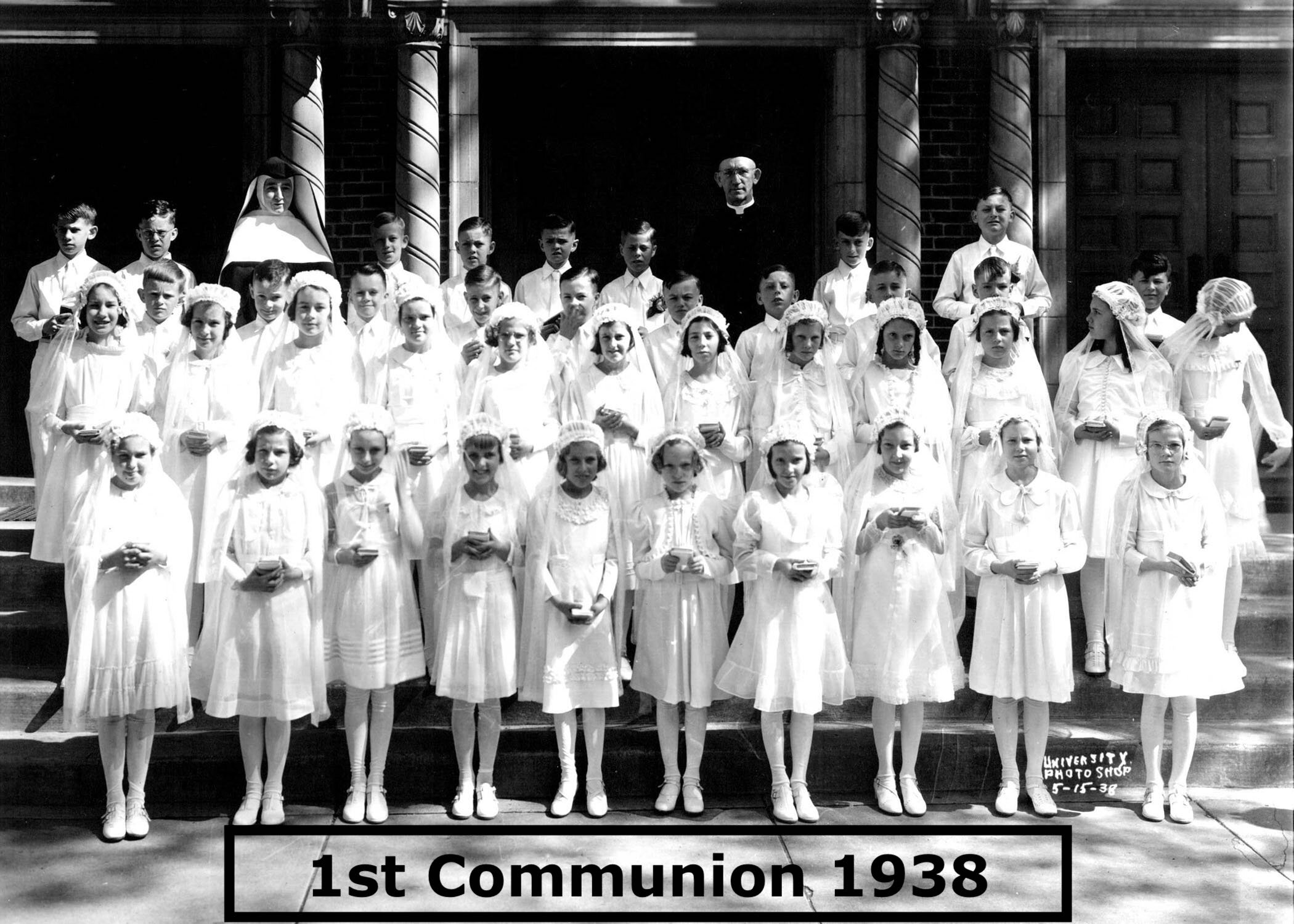
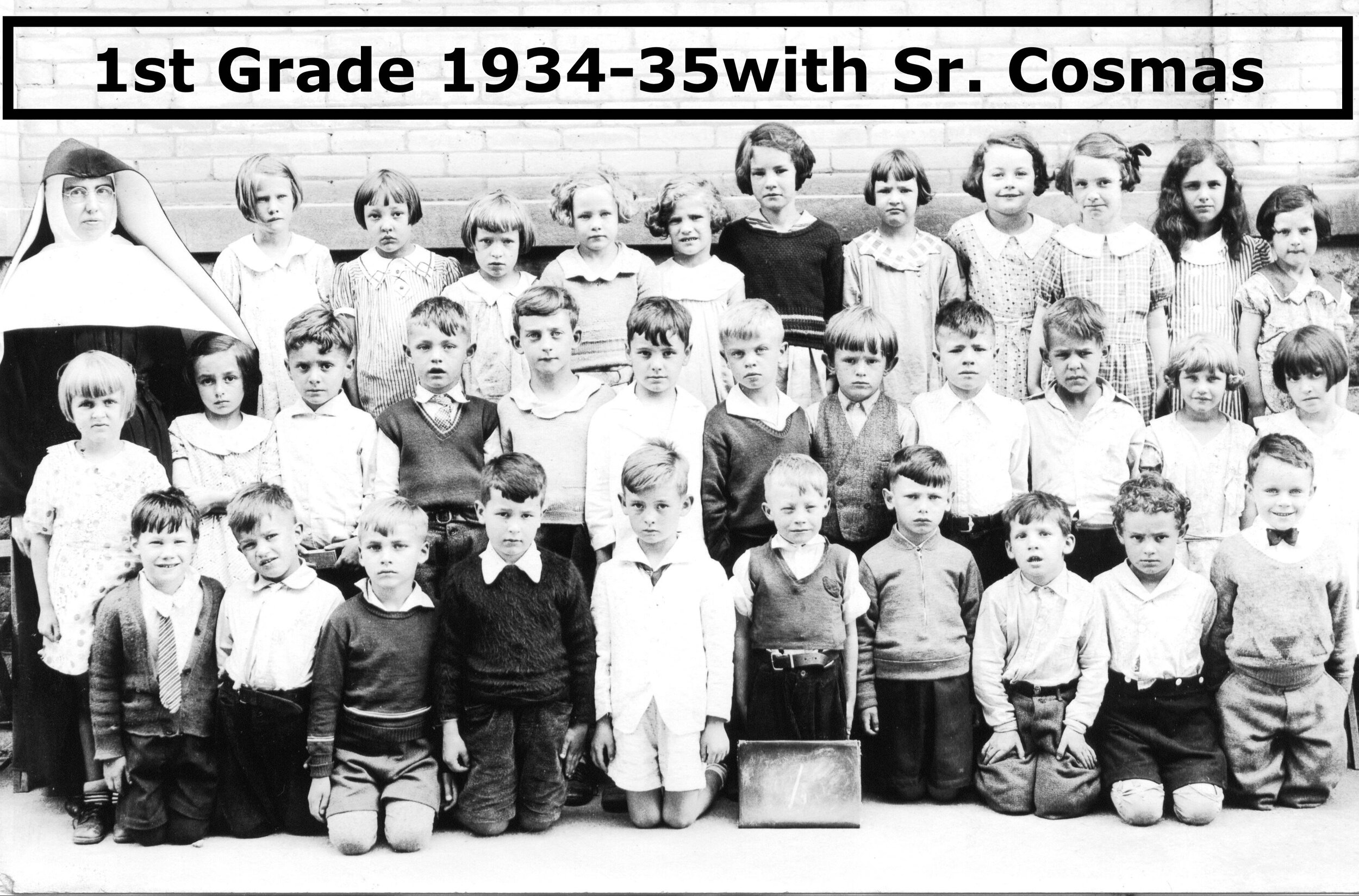
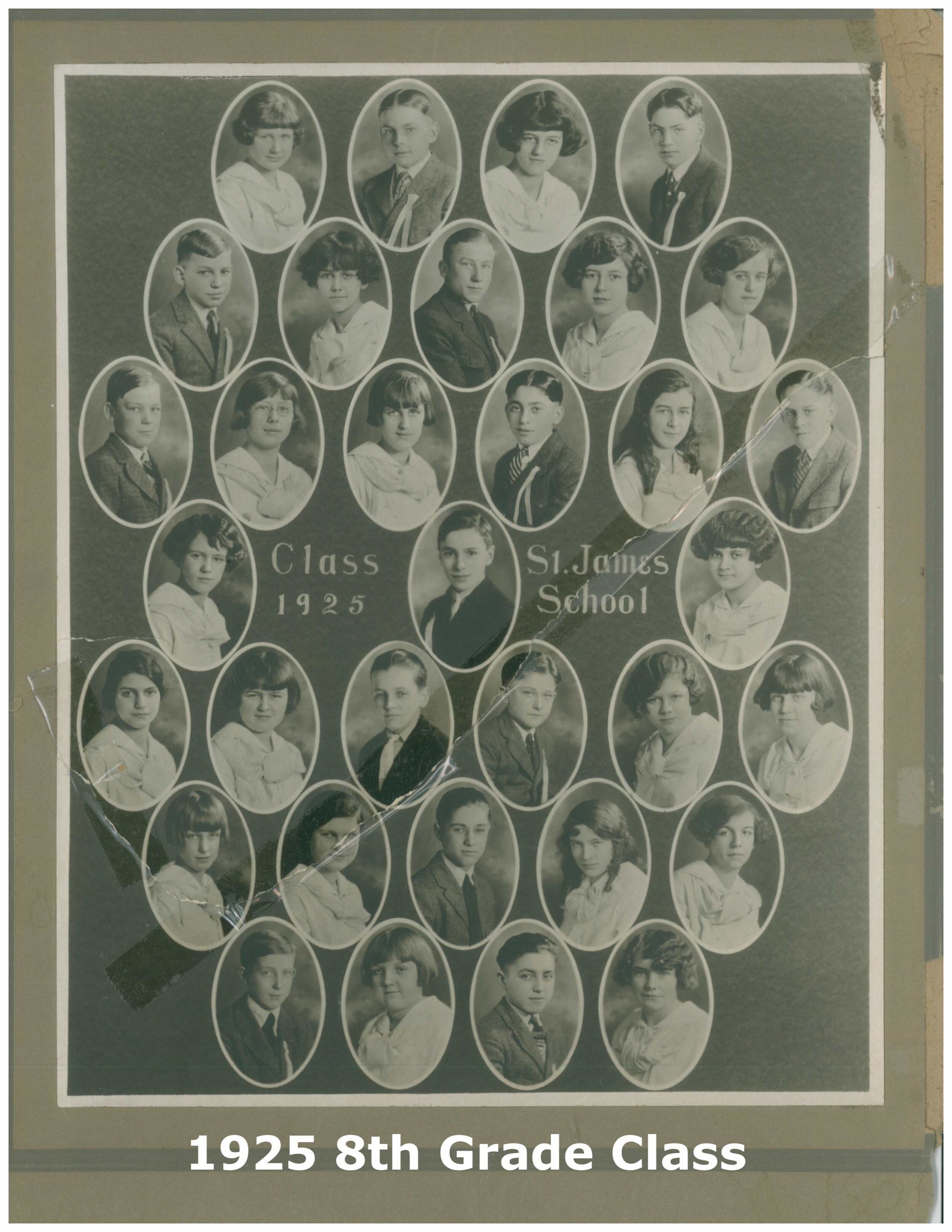
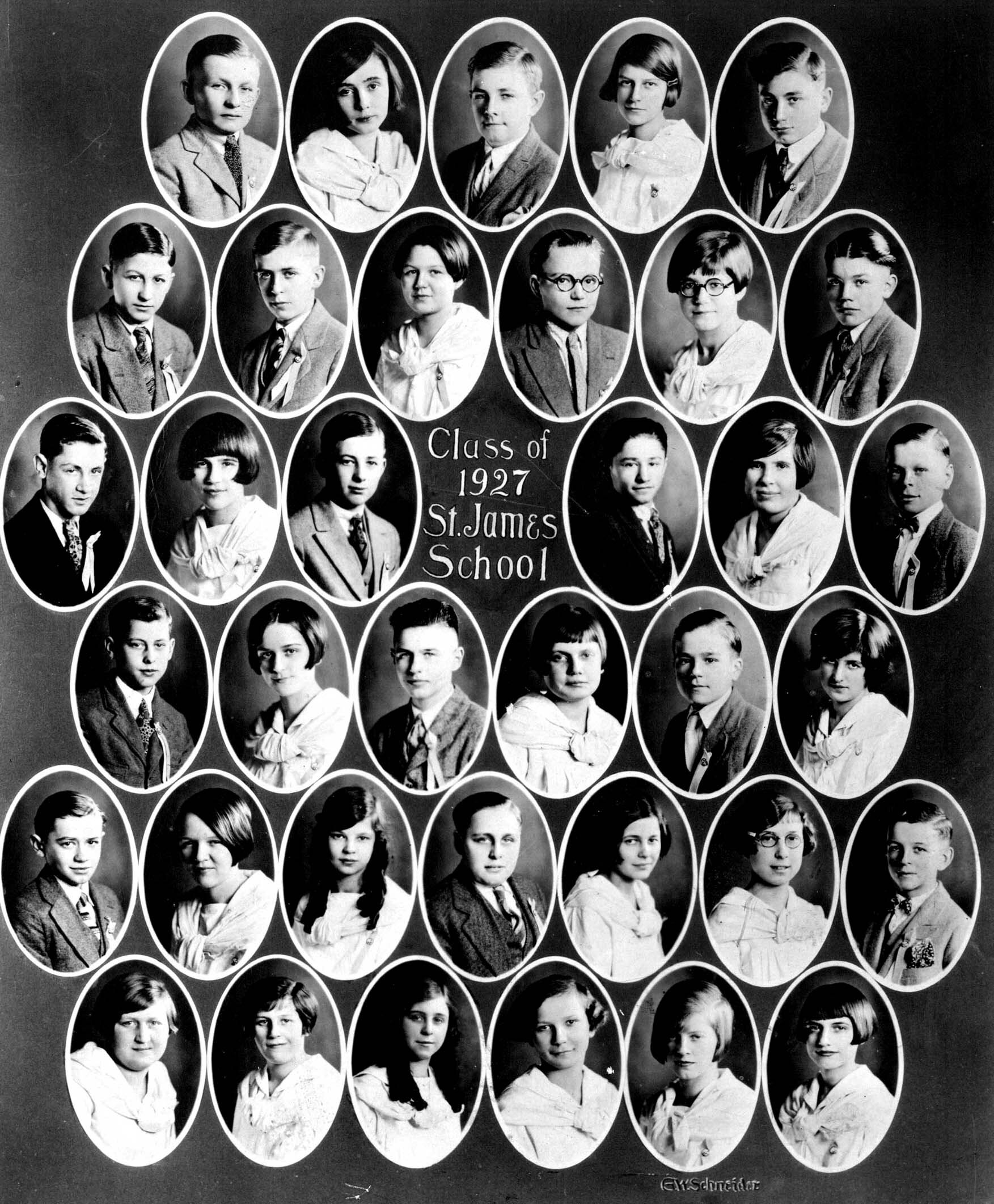
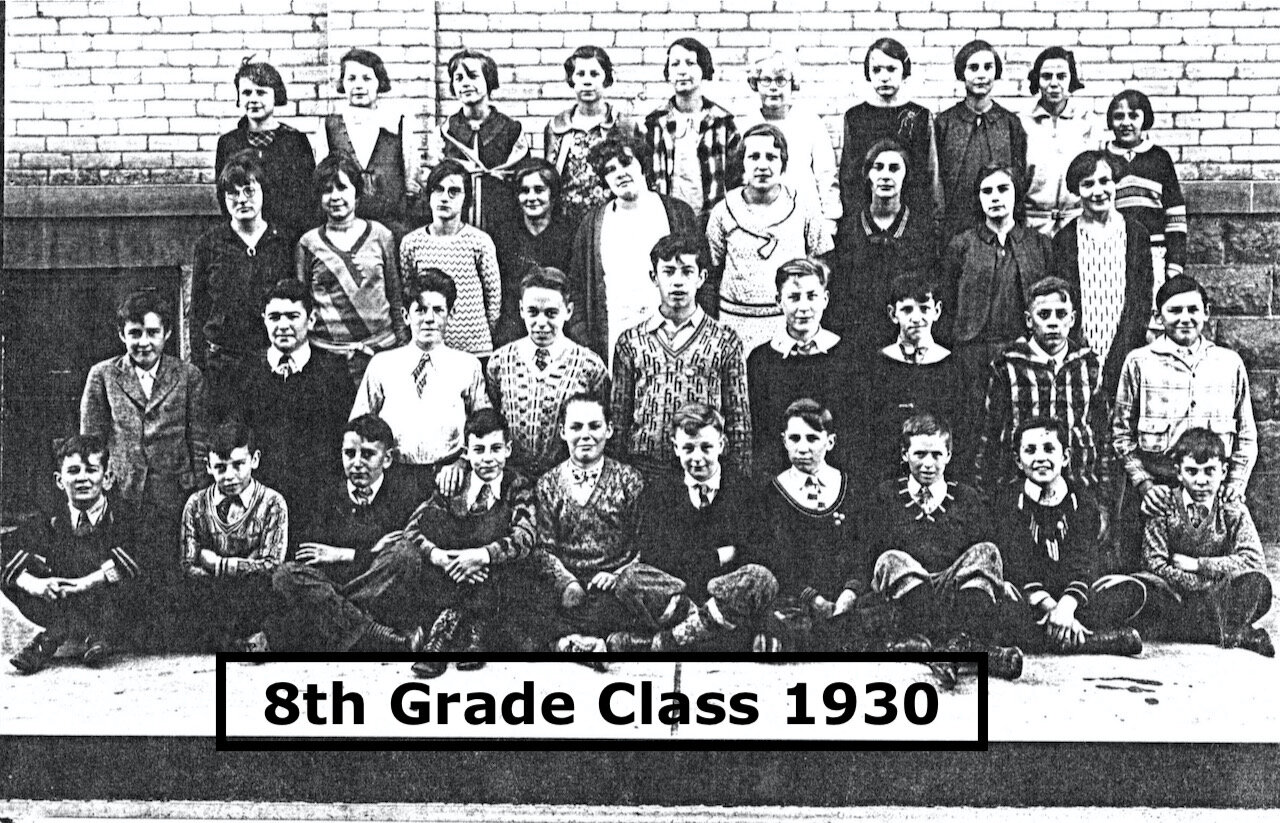
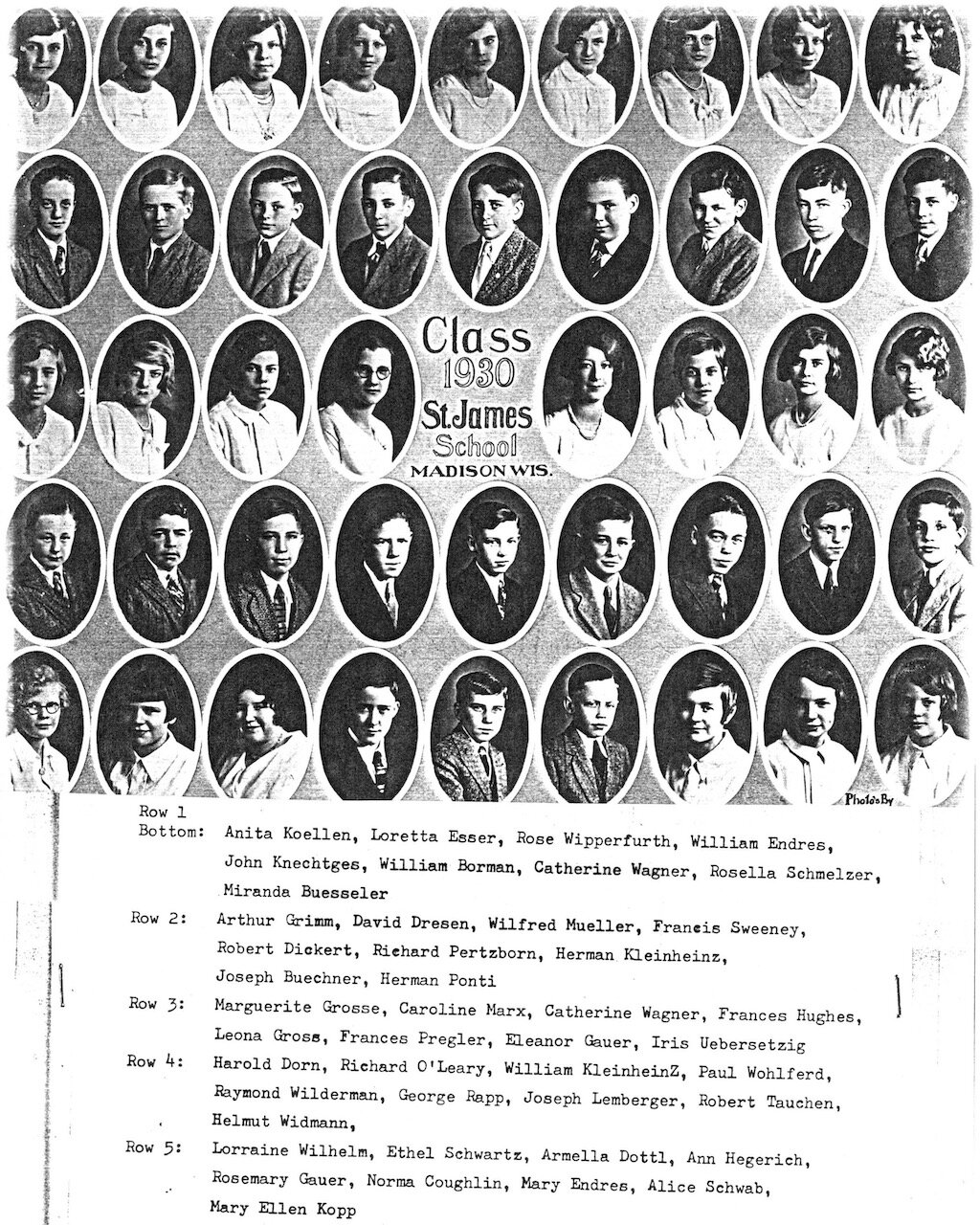
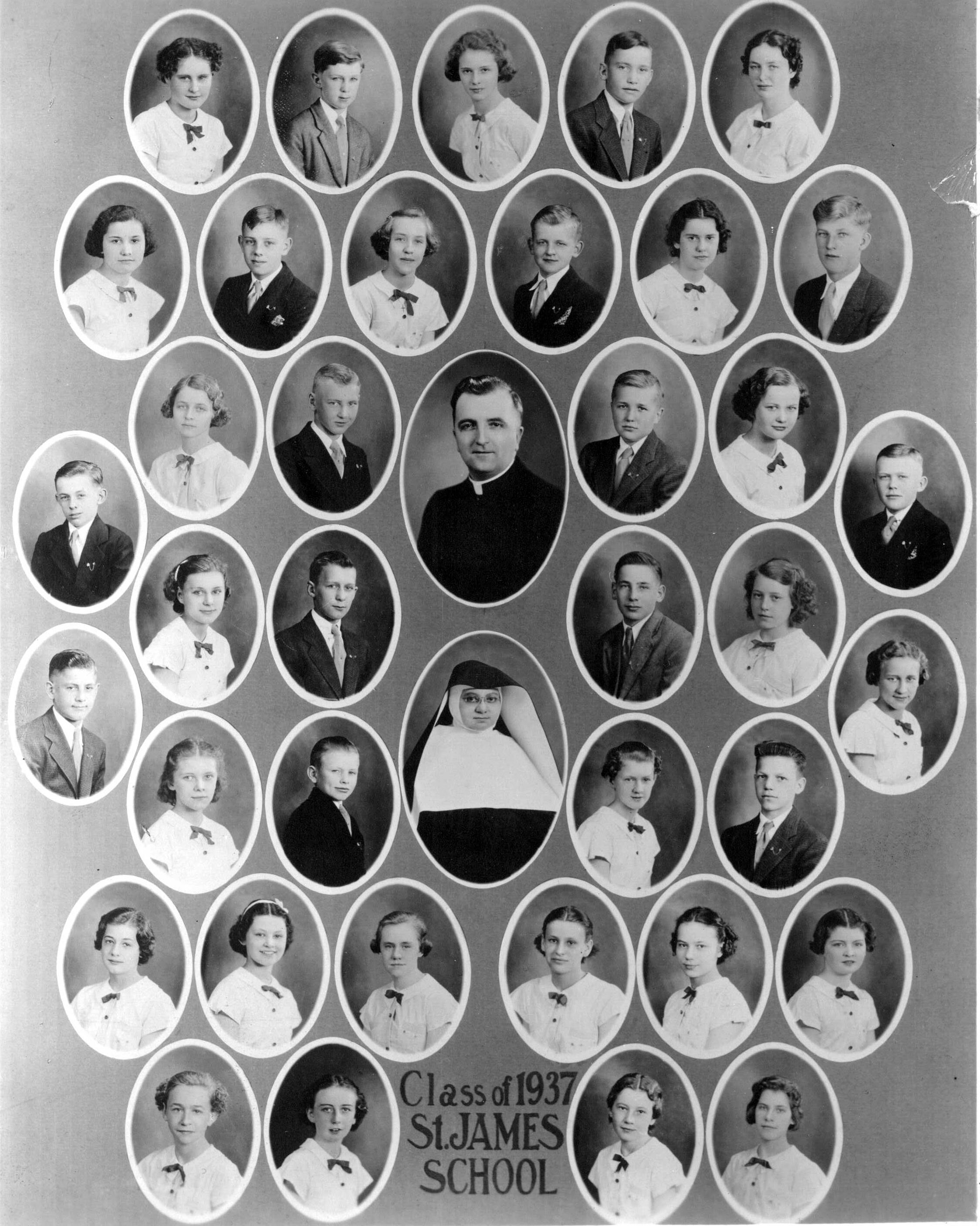
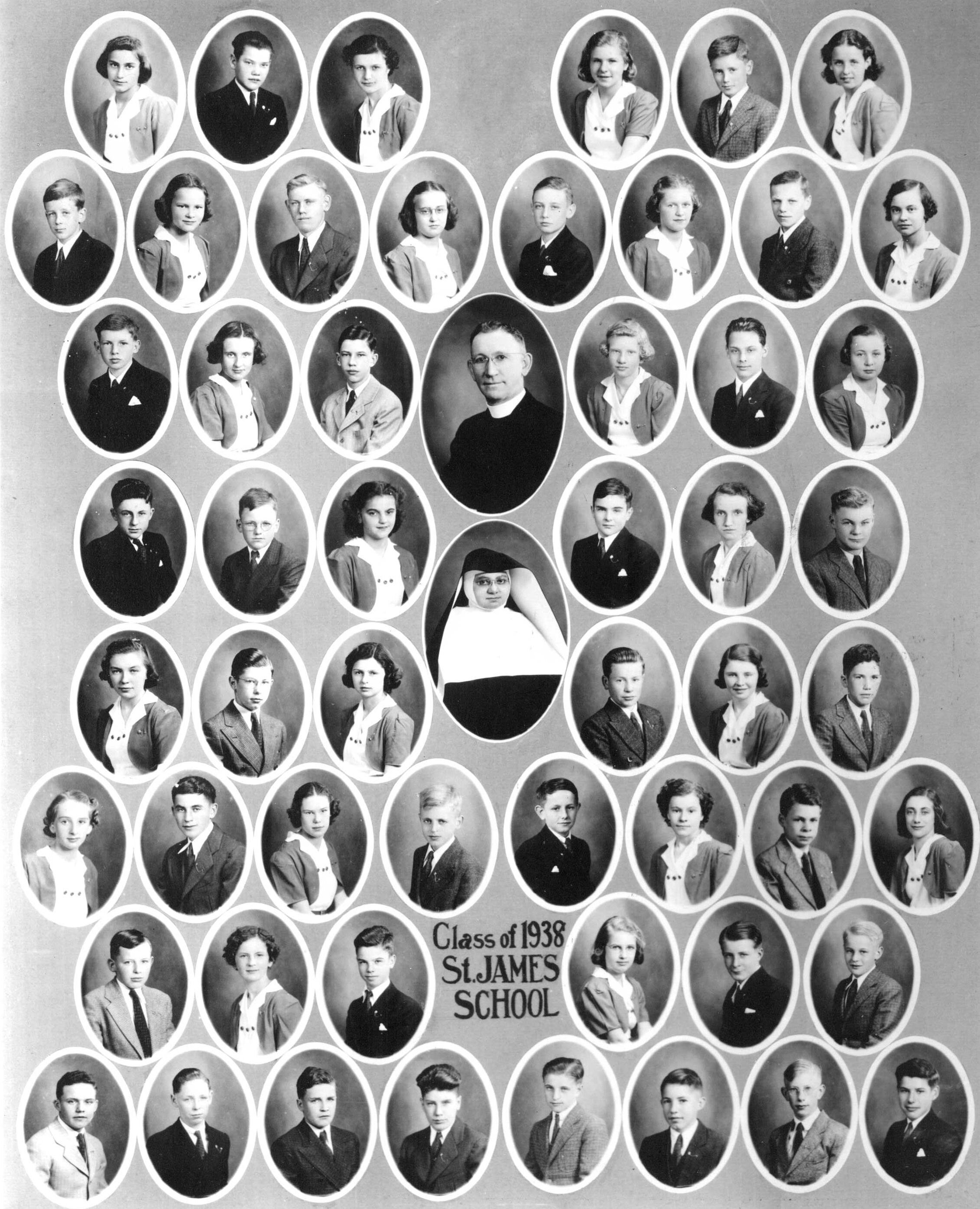
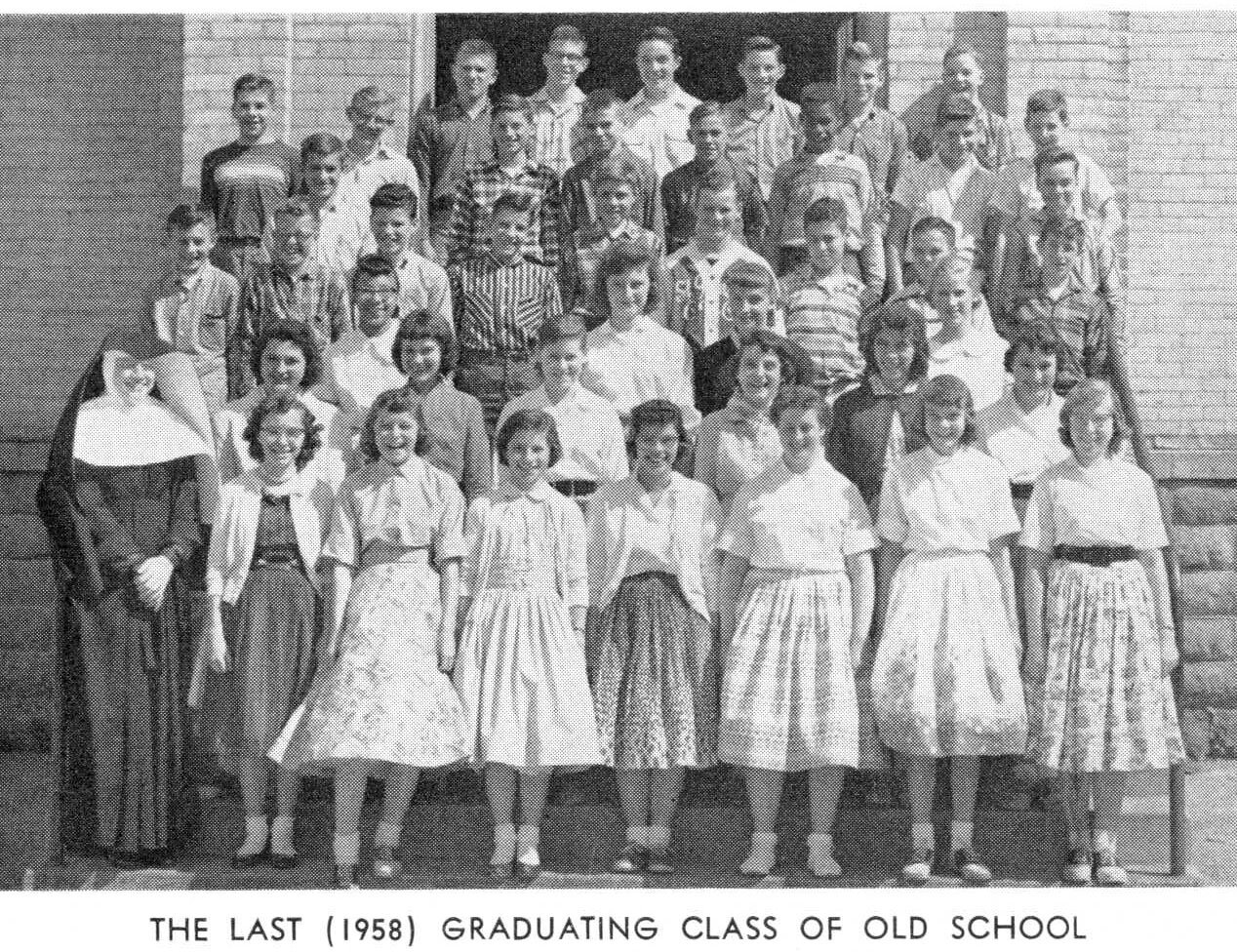
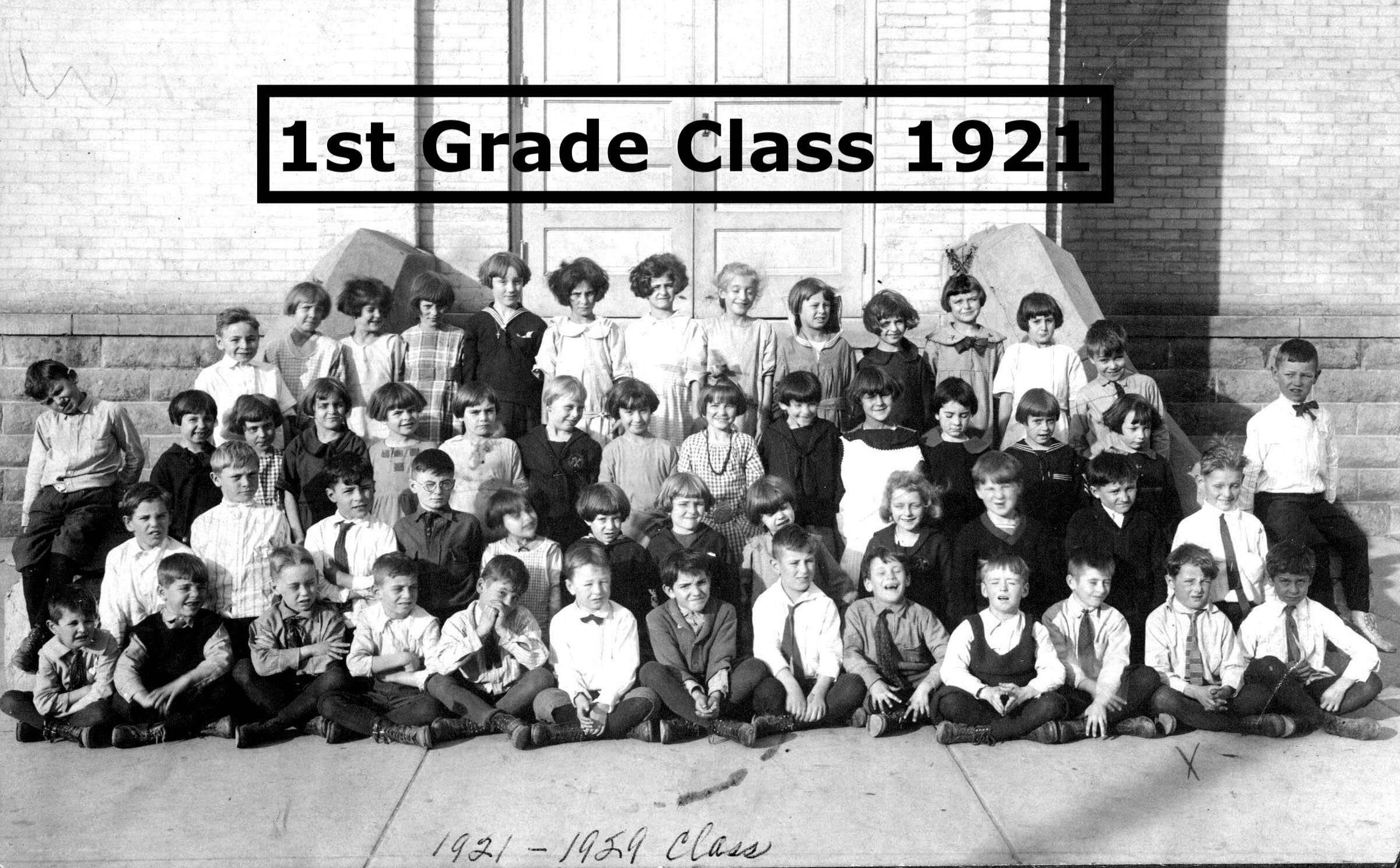
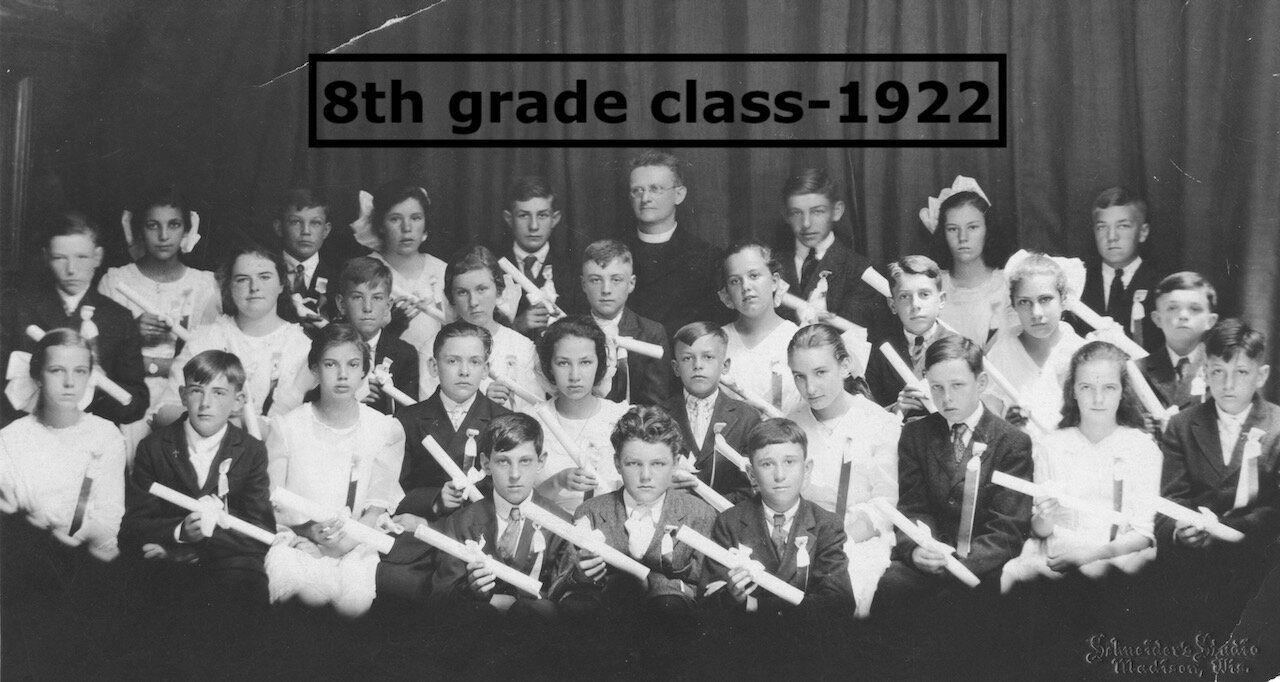

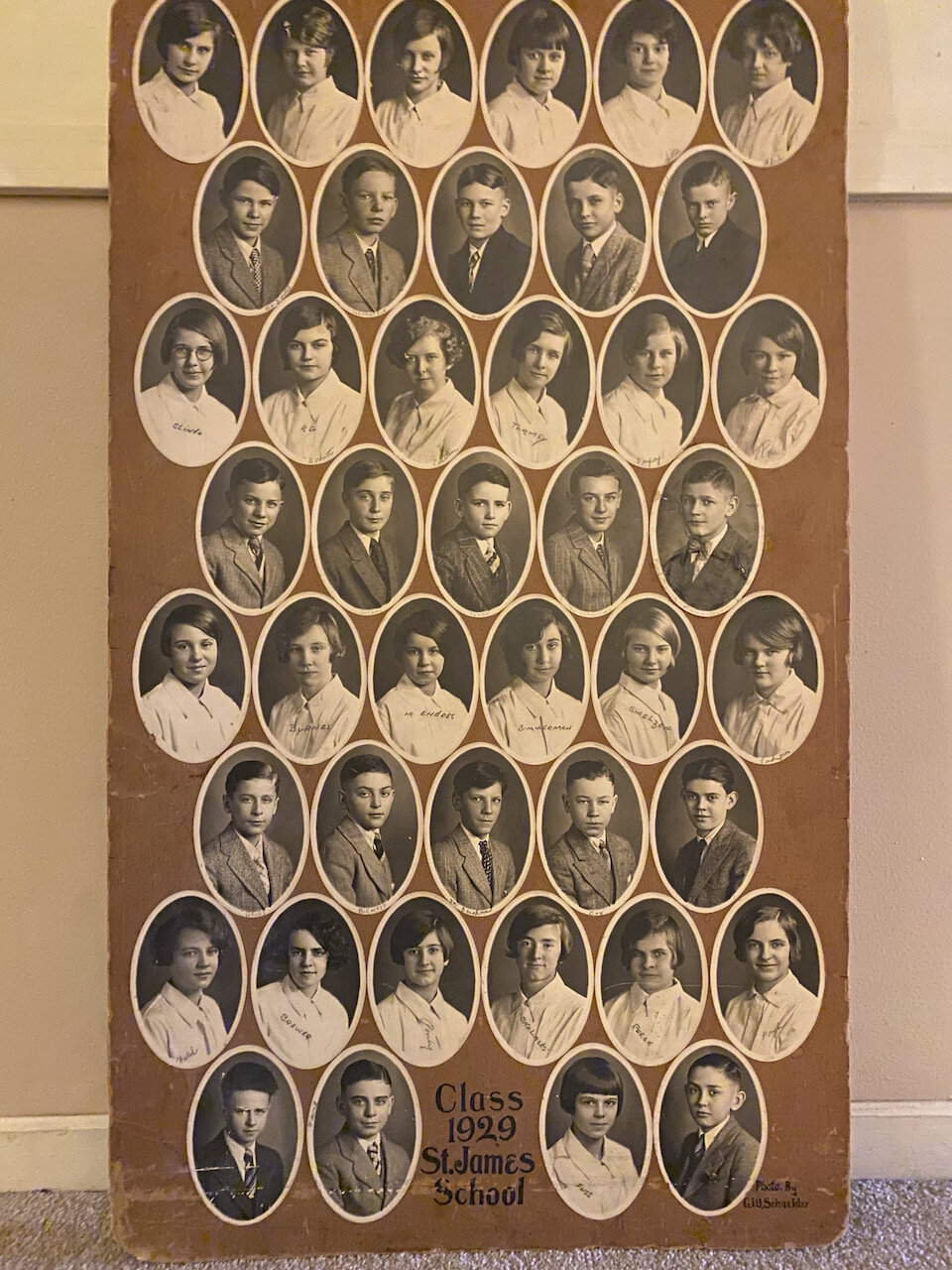

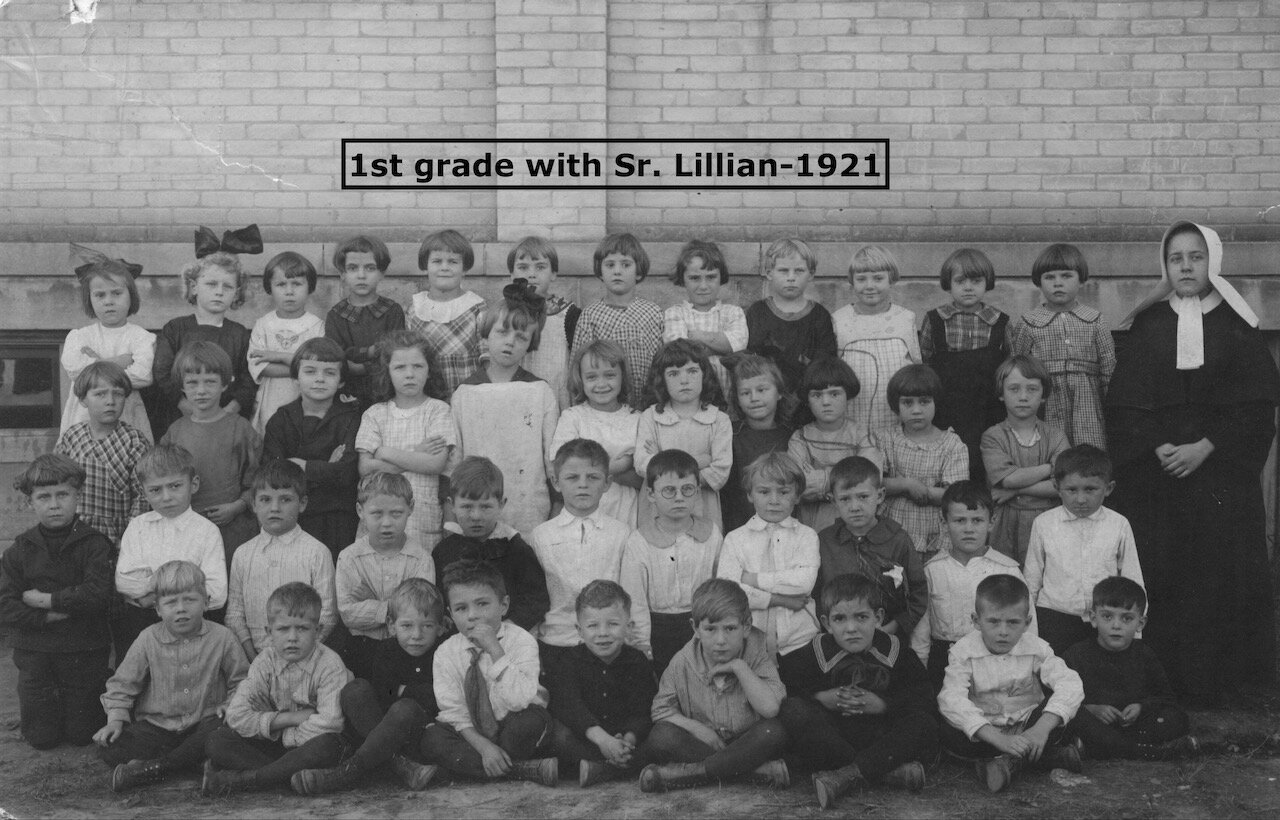
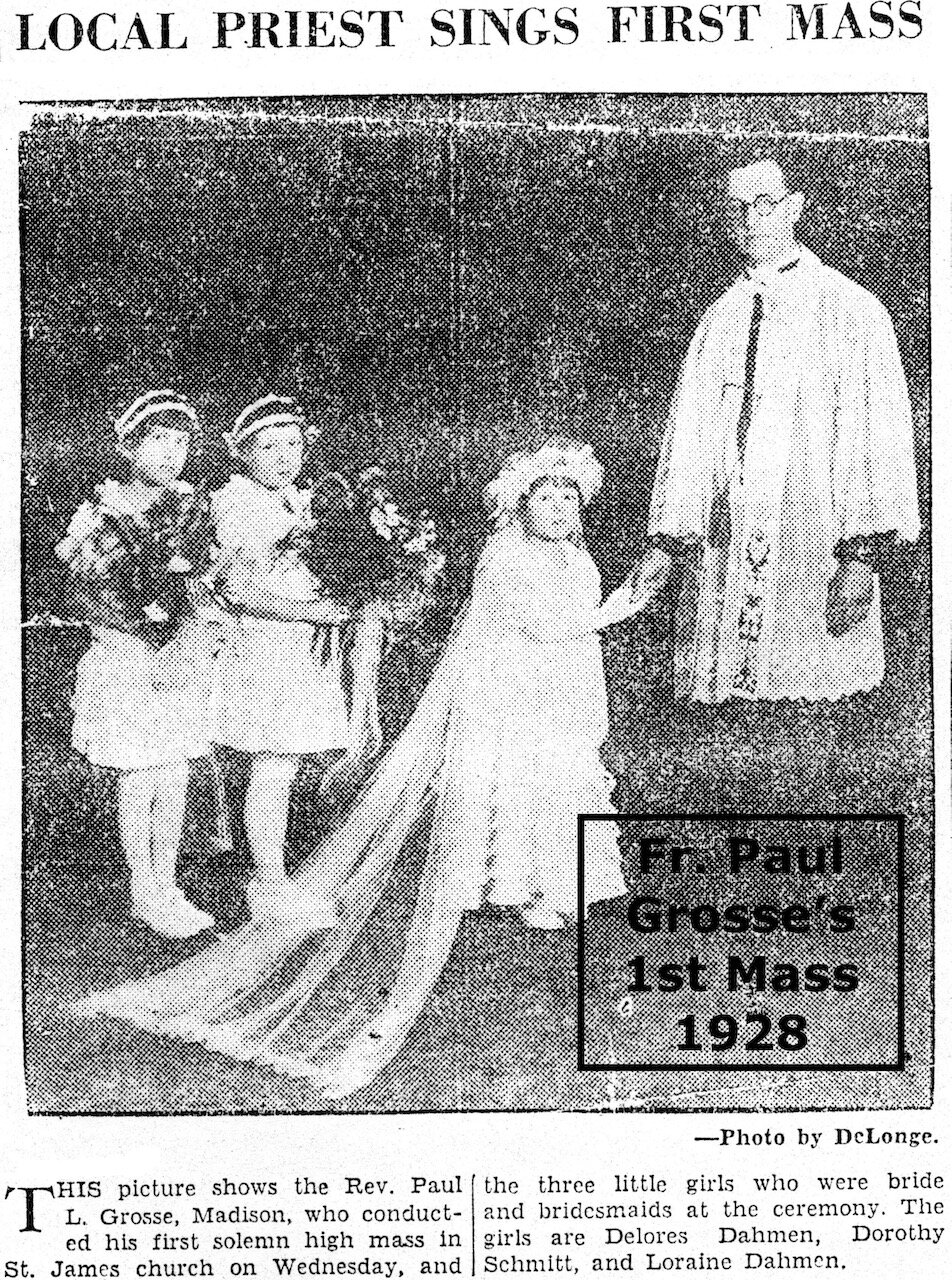
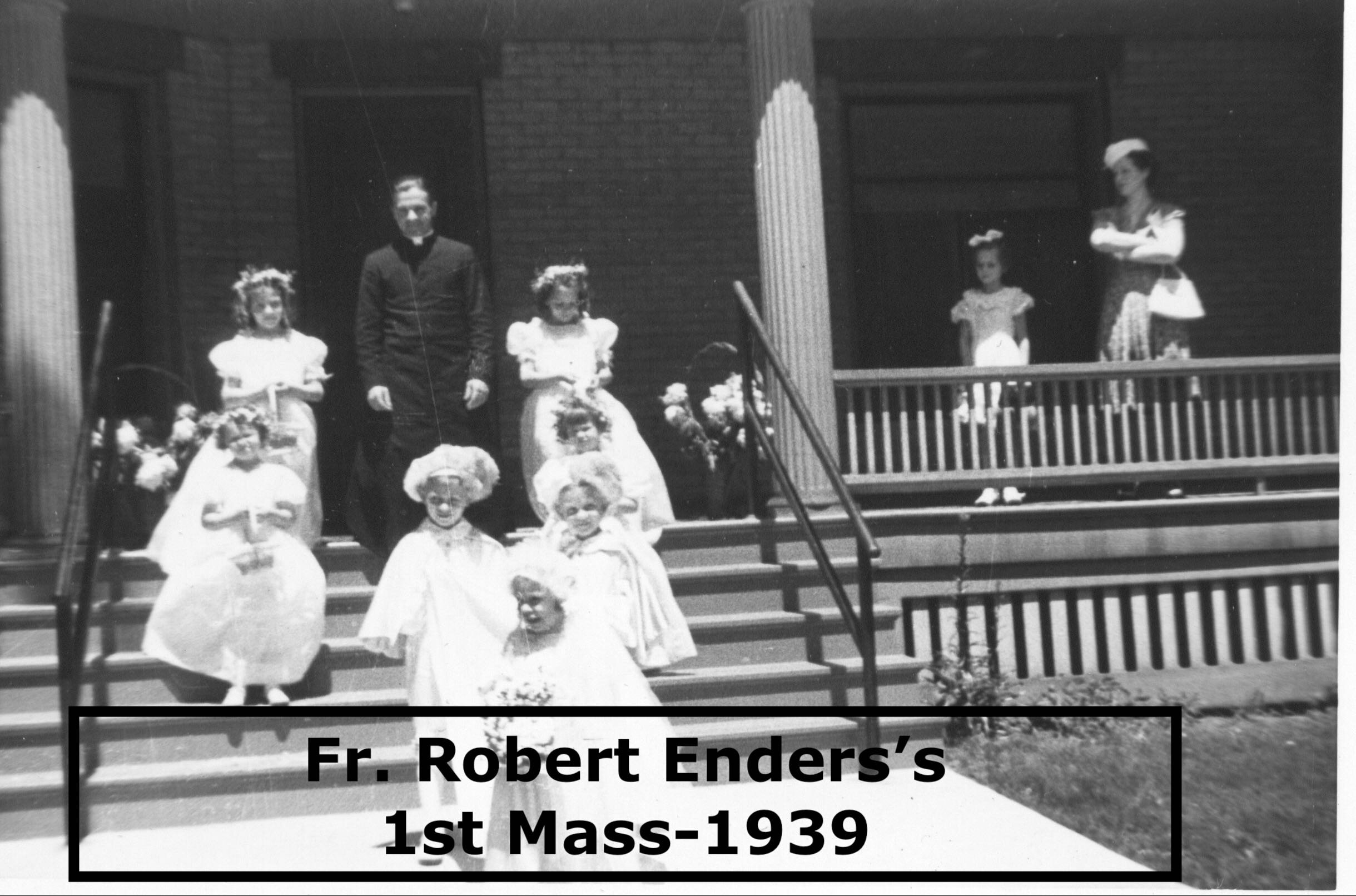
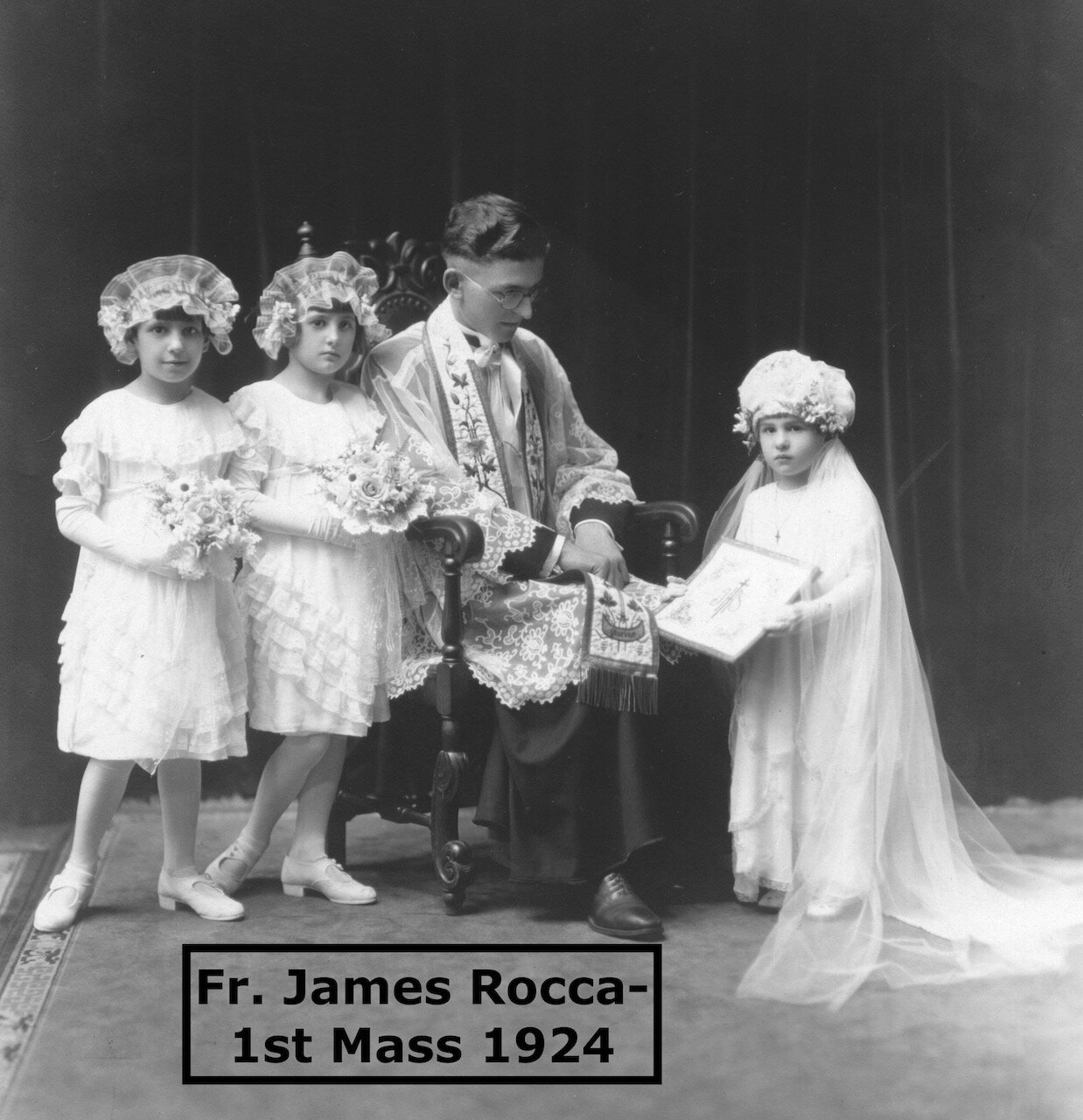
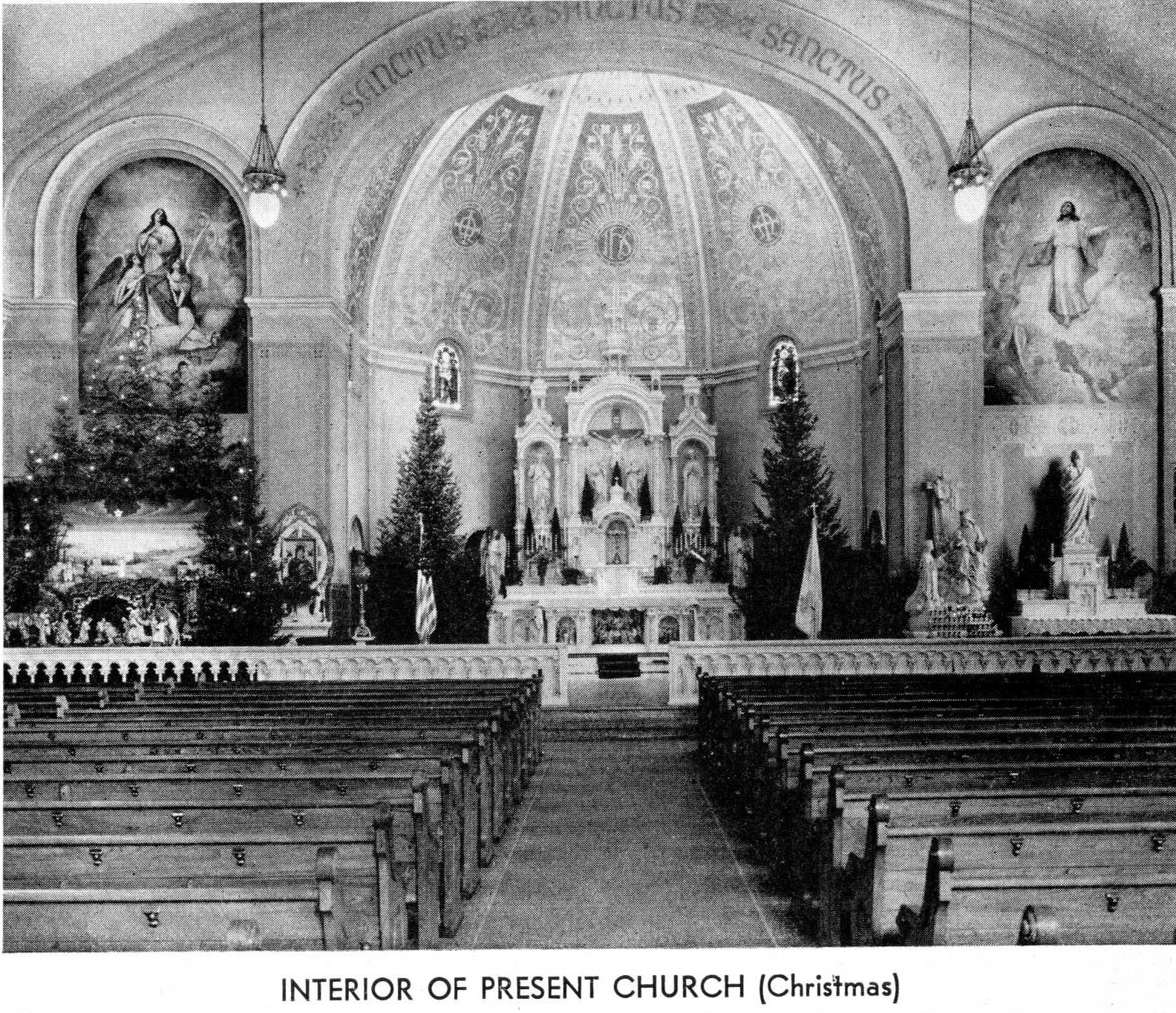
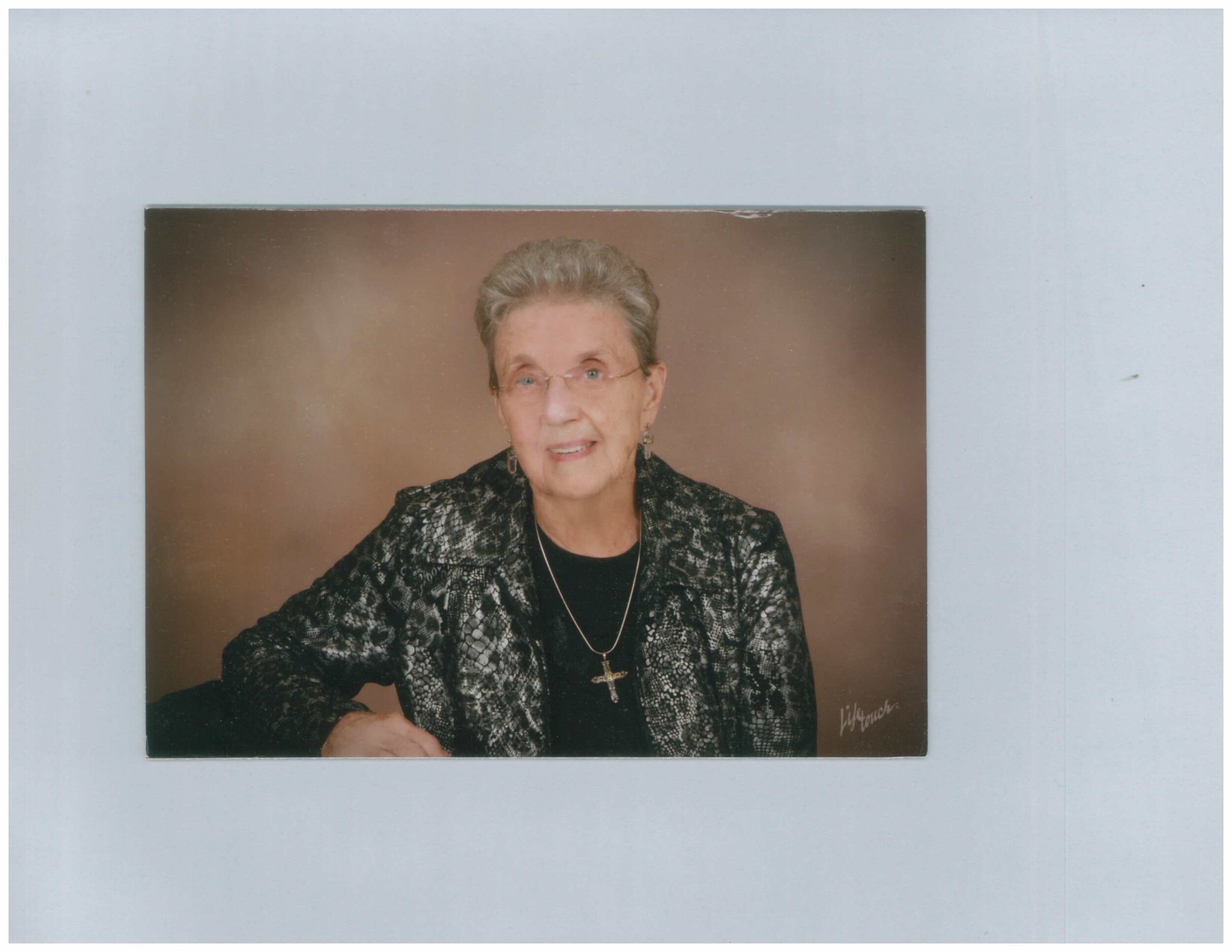
*Fr. Robert Enders is the great uncle of Randy Enders, the principal of St. James School. The wife of Randy’s great uncle was the niece of Fr. Arnold who is crediting with fostering vocations of St. James School students including Fr. Enders.
